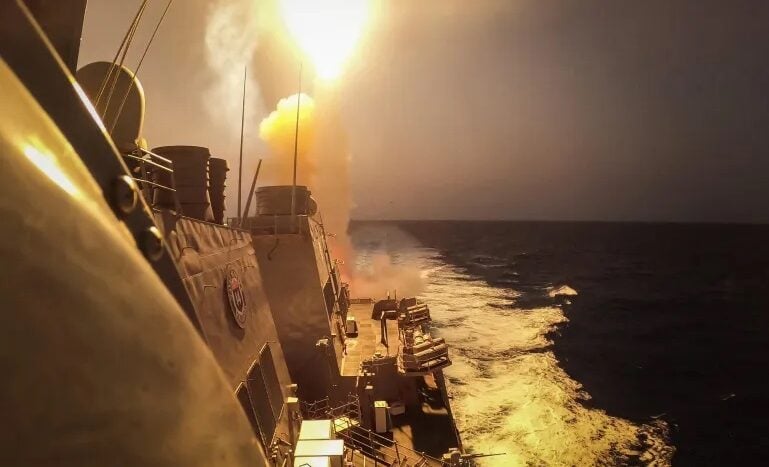The United States military has taken decisive action by destroying a significant fuel port in Yemen, aiming to undermine the operations of the Iran-backed Houthi rebels. Reports from the Houthis indicate that the airstrikes have resulted in the deaths of at least 20 individuals, including several paramedics, and left approximately 50 others injured. This concerted military effort comes amidst heightened tensions in the region, particularly following a series of Houthi missile attacks purportedly launched in solidarity with Palestinians amid the ongoing conflict in Gaza.
The US military asserts that the strike on the Ras Issa fuel port was part of a broader campaign to cut off vital supplies and financial resources to the Houthis, whose activities have been characterized as terrorism by the US government for over a decade. The Central Command of the US military emphasized that the objective of these strikes was to diminish the Houthis’ economic power, which they claim has fueled terror and suffering across Yemen.
Despite warnings and designations of the Houthis as a foreign terrorist organization earlier this year, the US military stated that operations at the Ras Issa port have persisted. The source of the fuel supplied through this port has not been disclosed, indicating ongoing logistical challenges within the region.
In a detailed statement, Houthi health ministry spokesman Anees Alasbahi reported that the preliminary death toll was likely to rise due to the severity of injuries and ongoing rescue operations. Images released by the rebels showed massive fireballs and thick smoke rising from the port area, highlighting the level of destruction inflicted by the US military actions. Rescue teams have been deployed to search for victims and contain ongoing fires.
The escalation in hostilities has prompted the Houthis to increase their missile and drone attacks targeting Israel, particularly in response to the Israeli military actions in Gaza that began in October 2023. The Israeli army confirmed that they successfully intercepted a missile launched from Yemen on Friday, indicative of the increasing complexity of the regional conflict.
Shipping routes have also been affected, with Houthi attacks disrupting critical maritime navigation through the Suez Canal, which is responsible for a substantial portion of global shipping traffic. In response to the escalating threats, international forces have upped their military presence in the area, with French defense officials reporting the destruction of a Houthi-launched drone by a French frigate in the Red Sea.
The US has maintained a course of military engagement against the Houthis since the Biden administration took office, with President Trump reiterating the commitment to continuing these actions until the threat to international shipping is neutralized. Moreover, the US State Department has raised concerns regarding support for the Houthis from a Chinese satellite firm, alleging that their actions and the Beijing government’s endorsements contradict claims of promoting peace in the region. The nature of this support remains somewhat vague, but it reportedly involves providing satellite imagery that assists the Houthis in their military operations.
As the situation continues to evolve, both regional and international stakeholders keenly observe the implications of ongoing military engagements in Yemen and the broader Middle East.













